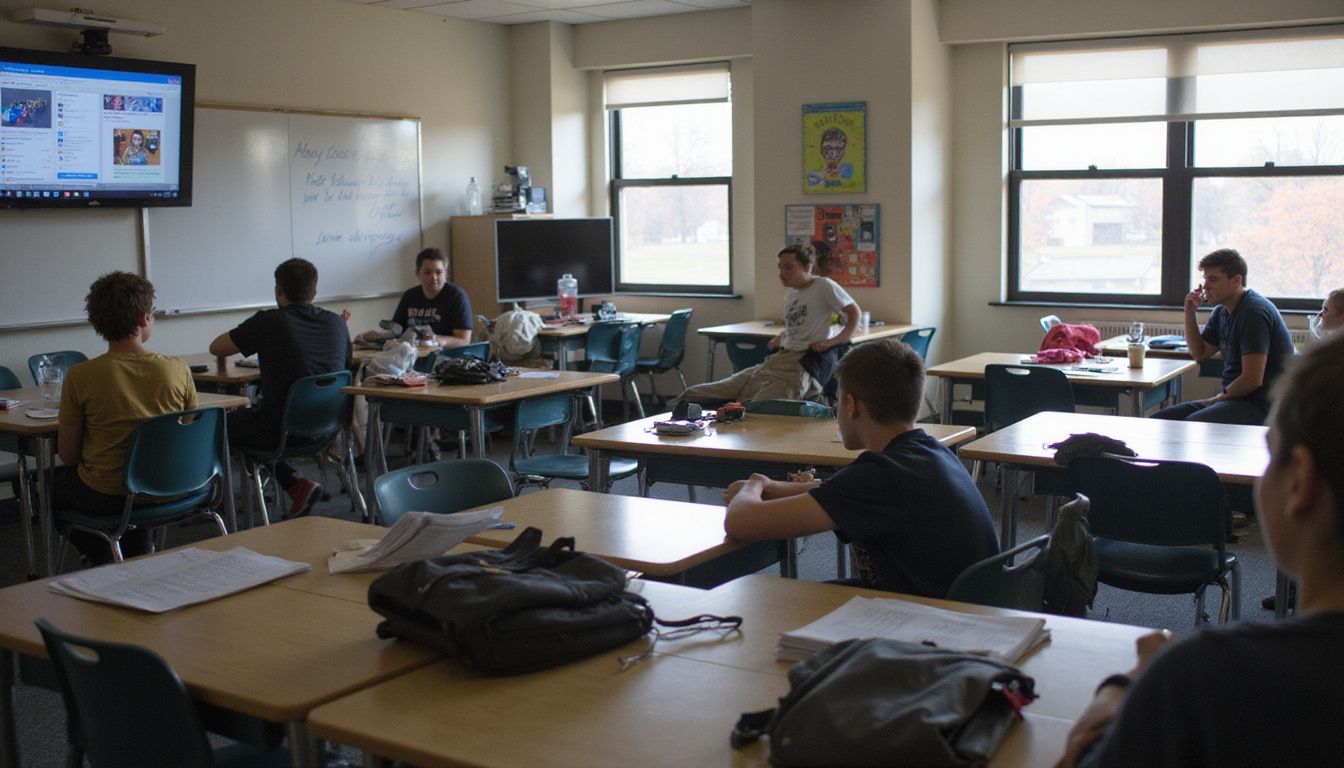
Classroom 15x Setup Ideas for Modern Learning Spaces
In today’s fast-paced educational environment, traditional classroom setups are quickly becoming outdated. Schools and institutions are seeking smarter, more adaptive learning environments that foster collaboration, creativity, and critical thinking. Enter Classroom 15x—a flexible, scalable concept that emphasizes a modular and tech-integrated setup for modern education. This model encourages dynamic learning through optimized space usage, digital tools, and learner-centered design.
In this article, we’ll explore Classroom 15x setup ideas that not only meet the demands of contemporary students and teachers but also align with 21st-century education goals. Whether you’re an educator, administrator, or a designer involved in building learning spaces, this guide offers actionable insights into making the most of the Classroom 15x model.
What Is Classroom 15x?
Classroom 15x is more than just a room size or furniture layout—it’s a forward-thinking learning space concept. The term typically refers to a 15-by-something dimension room, often square or rectangular, equipped with modular furniture, technology stations, and flexible teaching zones. But beyond dimensions, it’s about creating a multi-purpose, tech-enhanced environment where students can collaborate, move, present, and interact.
Think of Classroom 15x as a smart blueprint adaptable to different teaching styles: flipped classrooms, hybrid learning, group activities, STEM labs, and more. The 15x model serves as a flexible canvas that supports innovation without compromising core educational values.
Benefits of a Classroom 15x Setup
Implementing the Classroom 15x concept brings numerous advantages, especially when aligned with modern educational strategies. Here’s what schools and educators can expect:
- Improved Student Engagement: Interactive elements and flexible layouts help students feel more involved and motivated.
- Enhanced Collaboration: Group-friendly zones make it easier to encourage peer-to-peer learning and teamwork.
- Optimized Technology Integration: Smartboards, tablets, digital projectors, and charging stations can be embedded seamlessly.
- Adaptability for Teaching Styles: Teachers can easily shift between lectures, discussions, group work, and individual assignments.
- Future-Ready Learning: Students are better prepared for real-world problem-solving and tech-enabled careers.
These benefits make Classroom 15x a top contender for schools looking to evolve with the digital age.
Core Components of a Classroom 15x Design
To bring Classroom 15x to life, the setup must combine aesthetics, function, and educational purpose. Let’s break down the essential elements:
1. Modular Furniture
Desks and tables that can be reconfigured on the fly are essential. Consider mobile desks on wheels, collapsible chairs, and group pods. The goal is to support movement and flexibility so the space can adjust to any learning activity.
2. Technology Zones
Every Classroom 15x should include integrated tech zones. These could be digital whiteboards, touch screens, VR stations, or media centers. Power outlets, USB hubs, and high-speed Wi-Fi should be accessible from any part of the room.
3. Clear Learning Zones
Designate areas for specific purposes—quiet zones, collaboration corners, presentation space, and storage. Color-coded floor tiles or creative dividers can visually cue these areas without closing off space.
4. Storage Solutions
Clever storage is a must. Use vertical wall racks, cubbies, and under-desk storage to keep clutter away. Keeping the classroom clean and open improves focus and mobility.
5. Ergonomic Design
Don’t ignore comfort. Use adjustable chairs, padded seating, and footrests to support students’ physical health—especially in schools with long periods of seated learning.
Classroom 15x Setup Ideas for Different Learning Models
The versatility of the Classroom 15x design makes it suitable for various instructional models. Here’s how to tailor your setup:
1. Project-Based Learning (PBL)
Arrange desks in clusters or pods of 4–6, each with its supply station and shared digital device. Use whiteboard walls to encourage brainstorming and progress tracking.
2. Flipped Classrooms
Use a central hub with bright screens where students can watch lessons or presentations while seating is arranged in small circles for discussion. Add flexible dividers for quiet study when needed.
3. STEM and Maker Classrooms
Classroom 15x can be optimized for hands-on learning with mobile lab tables, tool carts, and maker stations. Ensure durable surfaces and easy cleanup features for messier projects.
4. Distance or Hybrid Learning
Incorporate video conferencing setups, microphones, and digital whiteboards for hybrid classes—position screens to allow remote students to engage with in-person peers fully.
5. Elementary vs. High School Classrooms
Younger students need more visual aids, open play spaces, and creative zones. Older students benefit from task-specific workstations, ergonomic seating, and tech integration.
Design Tips for Maximum Effectiveness
A Classroom 15x setup should be thoughtful and strategic. Here are design tips to help maximize learning and usability:
- Keep traffic flow open: Avoid bottlenecks and make transitions between zones easy.
- Use natural light: Incorporate large windows or soft lighting to reduce screen fatigue.
- Add writable surfaces: Allow students to jot notes on desks, walls, or digital pads.
- Choose calming colors: Earth tones, blues, and greens promote focus and reduce stress.
- Include student input: Let students help design or arrange their classroom—they feel more invested and responsible.
How to Maintain and Evolve Classroom 15x
Setting up a modern learning space is not a one-time event. A good Classroom 15x design is built to evolve. Conduct quarterly evaluations with feedback from students and staff. Monitor which zones are most used or neglected. Update technology as needed and replace worn furniture to keep the environment fresh.
Additionally, stay informed about emerging educational tech trends so you can keep your Classroom 15x compatible with the latest learning tools and digital platforms.
Why Classroom 15x Matters for Future Education
Education is rapidly shifting toward personalization, creativity, and critical thinking. Traditional, rigid classroom models don’t support these goals well. The Classroom 15x concept creates a flexible framework where teachers can teach and students can learn in ways that are dynamic, interactive, and student-centered.
Schools that adopt Classroom 15x designs often report higher engagement, better test performance, and more innovation in both teaching and learning. The space itself becomes an active participant in the education process, not just a container for desks and chairs.
Conclusion
The Classroom 15x model is more than a trendy layout—it’s a necessary shift in how we think about education spaces. As teaching methods evolve and technology reshapes our approach to learning, schools must adapt their environments to keep pace. By using flexible furniture, tech integration, and thoughtful zoning, a Classroom 15x setup can empower both teachers and students to succeed in the modern world.
Whether you’re building a new school, upgrading an existing classroom, or rethinking a learning center, the Classroom 15x concept offers the tools and flexibility to meet future demands.
FAQs
1. What is Classroom 15x?
It’s a flexible, tech-enabled classroom layout model designed for modern, collaborative learning.
2. Why should schools use Classroom 15x?
It supports diverse teaching styles, boosts engagement, and enhances space efficiency.
3. Is Classroom 15x suitable for small schools?
Yes, the model scales easily and works for classrooms of various sizes and budgets.
4. What tech is needed for Classroom 15x?
Smartboards, Wi-Fi, tablets, and modular charging stations are common additions.
5. Can Classroom 15x support hybrid learning?
It’s ideal for combining in-person and remote teaching environments.



